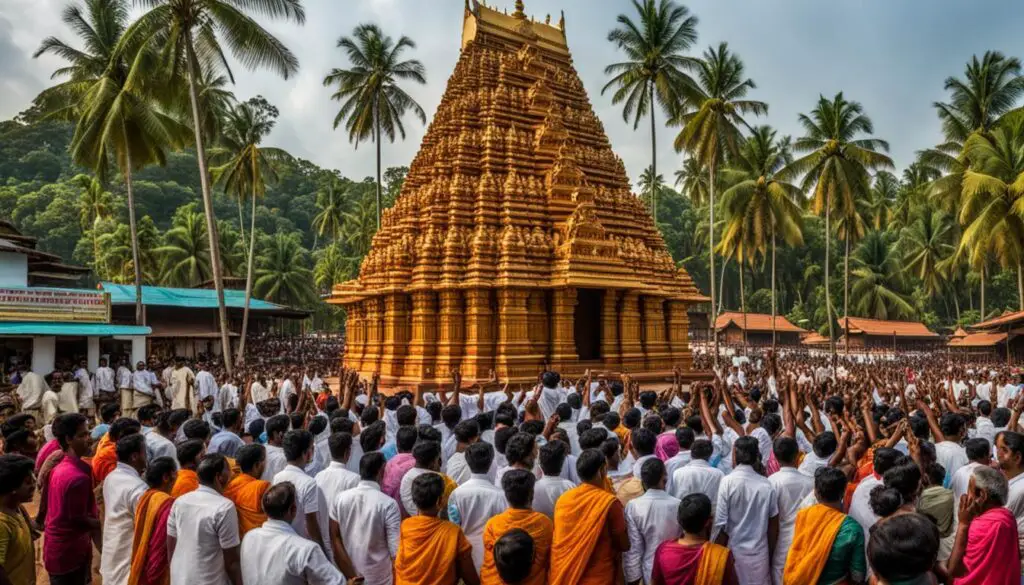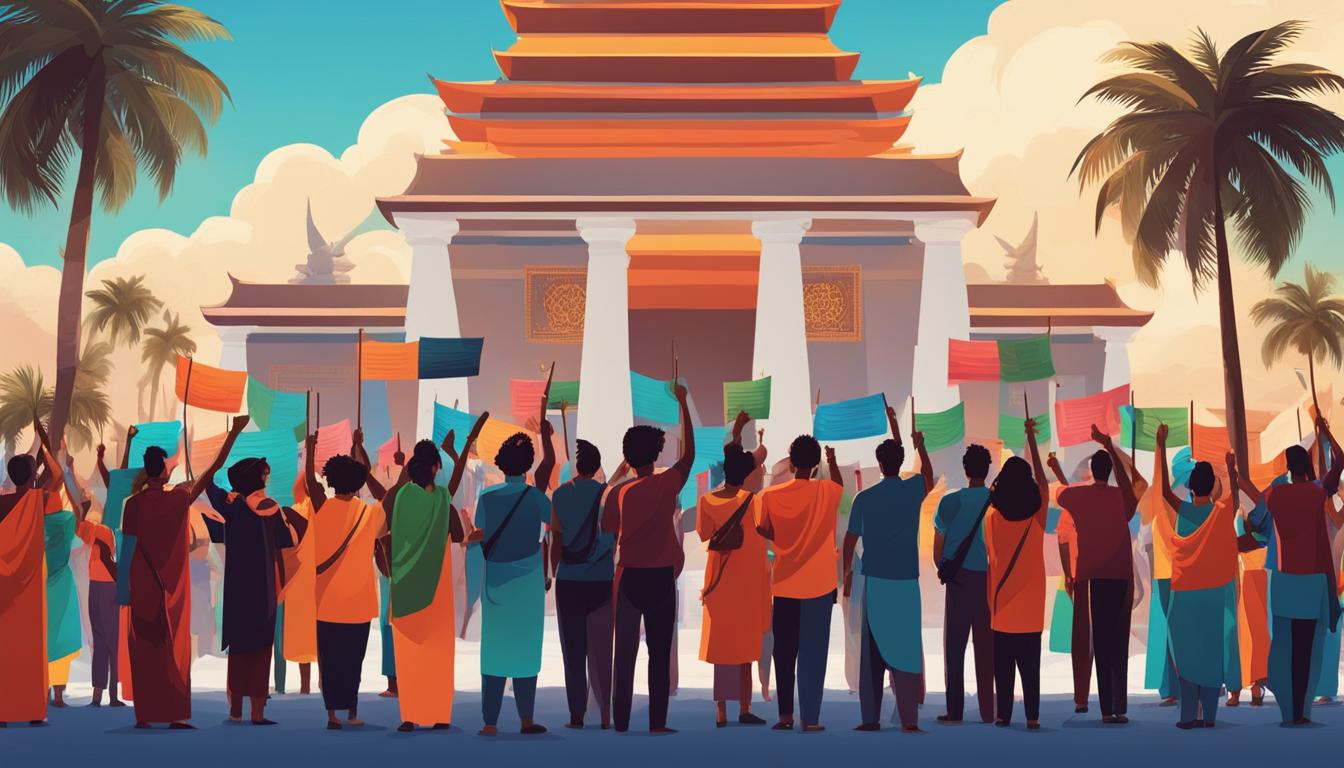The Guruvayur Satyagraha stands as a testament to the power of nonviolent protest in India’s freedom struggle. This historic movement took place in the Thrissur district of Kerala from 1931 to 1932. Led by K. Kelappan, the satyagraha aimed to ensure entry for marginalized communities into the revered Guruvayur Temple.
Supported by Mahatma Gandhi and the Indian National Congress, the Guruvayur Satyagraha garnered nationwide attention and admiration. Gandhi hailed it as “the miracle of modern times” and “a charter of spiritual emancipation.” The movement faced opposition and even violence, including the brutal assault of A.K. Gopalan.
Despite the challenges, the Guruvayur Satyagraha sparked a significant shift in public opinion. An opinion poll was conducted, and an overwhelming 77% favored allowing entry for all castes into temples. This marked a pivotal moment in the fight against caste-based discrimination and set the stage for the Temple Entry Proclamation in 1936, which granted access to backward Hindu communities.
Key Takeaways:
- The Guruvayur Satyagraha was a nonviolent protest in Kerala that aimed to grant entry to marginalized communities into the Guruvayur Temple.
- Mahatma Gandhi and the Indian National Congress supported the satyagraha and viewed it as a symbol of spiritual liberation.
- The movement faced opposition and violence, including the assault of A.K. Gopalan.
- The struggle led to an opinion poll where 77% favored temple entry for all castes, paving the way for the Temple Entry Proclamation in 1936.
- The Guruvayur Satyagraha played a significant role in eradicating untouchability and promoting social reform in Kerala.
Background of Guruvayur Satyagraha
The Guruvayur Satyagraha, led by K. Kelappan, was a courageous act of protest against social injustices in Kerala, India. In an effort to bring attention to the discrimination faced by marginalized communities, Kelappan embarked on a 12-day hunger strike.
This powerful form of nonviolent resistance caught the attention of Mahatma Gandhi and the Indian National Congress, who recognized the significance of this struggle. While Gandhi praised the Guruvayur Satyagraha as a remarkable event, he also expressed some reservations about certain aspects of Kelappan’s approach.
The satyagraha faced strong opposition, including a brutal assault on A.K. Gopalan, a prominent supporter of the movement. However, despite these challenges, the Guruvayur Satyagraha garnered widespread support and highlighted the urgent need to combat untouchability.

The image above depicts the courageous activists who participated in the Guruvayur Satyagraha, standing united in their fight for equality and justice.
The Guruvayur Satyagraha played a crucial role in mobilizing public opinion and laying the foundation for significant social reforms that followed, marking a turning point in India’s struggle against caste-based discrimination.
Impact and Legacy of Guruvayur Satyagraha
The Guruvayur Satyagraha left an indelible mark on the social and political landscape of Kerala, India. This historic movement, along with other similar struggles, played a pivotal role in eradicating untouchability and dismantling the oppressive caste system. It became a symbol of the unwavering determination of marginalized communities to fight for their rights and achieve equality.
One of the most significant outcomes of the Guruvayur Satyagraha was the Temple Entry Proclamation in 1936. Through this landmark reform, backward Hindu communities were granted access to temples, breaking down barriers and ushering in a new era of social justice. The proclamation marked a milestone in Kerala’s history, setting a precedent for future efforts towards inclusiveness and equality.
The legacy of Guruvayur Satyagraha continues to inspire activists and serves as a powerful reminder of the efficacy of nonviolent resistance in driving meaningful change. It stands as a testament to the collective power of individuals united in their pursuit of social reform. The impact of this movement resonates even today, fueling ongoing efforts to create a more just and inclusive society.
FAQ
What is the Guruvayur Satyagraha?
The Guruvayur Satyagraha was a significant nonviolent protest that took place in Thrissur district, Kerala, India, from 1931 to 1932. Led by K. Kelappan, the satyagraha aimed to grant entry for marginalized communities into the Guruvayur Temple.
Who initiated the Guruvayur Satyagraha?
The Guruvayur Satyagraha was initiated by K. Kelappan, who went on a 12-day hunger strike as a form of protest. Mahatma Gandhi and the Indian National Congress intervened in response to Kelappan’s fast to show their support for the movement.
What impact did the Guruvayur Satyagraha have?
Guruvayur Satyagraha had a profound impact on the social and political landscape of Kerala. It contributed to the eradication of untouchability and the dismantling of the oppressive caste system. The movement symbolized the determination of marginalized communities to fight for their rights and equality.

